The ancient art of painting with melted beeswax is all the buzz, and Tucson is party central.
Miles Conrad likes the instantaneousness of it. “You dip your brush in and you have three seconds before it becomes a thick paste. So you can’t sit there pondering your next move. Once the brush is loaded, you have to go for it.”
Encaustic, or hot wax painting, began as a way for Greeks and Egyptians to seal and brand their wooden ships. The technique was used by the ancient Greeks in portrait and mural painting. Today, thanks to a resurgence in popularity the last two decades, it’s the punk rock of the art world: a medium that’s fast, sometimes furious, and because of that, very intuitive, says Miles.
Miles, who specializes in encaustic sculpture, is co-owner with his partner Ryan Wilde of Conrad Wilde Gallery. Miles has a fellow student to thank for introducing him to encaustics more than two decades ago. Amy Ellingson, a colleague at California Institute of the Arts, happened to ask their instructor to demonstrate it, and Miles was hooked. Today, not only is he a go-to locally, for private lessons and his own line of encaustic art supplies, he’s also made a name for himself nationally. Artists in the encaustic world laud him for his precision, his attention to detail, and his teaching and mentoring skills. The eighth annual encaustic show at Conrad Wilde Gallery currently features eighteen encaustic artists from all over the country, showing paintings and sculptures.
*Several works from the show are featured at the end of this article.
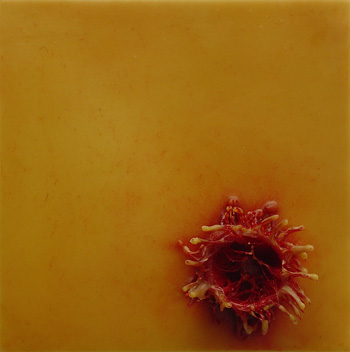
Photo courtesy of Miles Conrad
Painting with hot wax gives a matte finish that's like glazing on a scone or doughnut, and multiple layers of paint and clear wax make for a lot of depth - meaning an artist can then texture, scrape and sculpt with it.

"3Bioslice"
Photo courtesy of Miles Conrad
There's also the fact that beeswax is a natural preservative. Another plus for Miles? "I was always ruining oil paintbrushes by not washing them properly." The natural bristle paintbrushes used for encaustic art can be melted again and re-used indefinitely.
Miles' range of encaustic materials are mixtures of beeswax, damar resin and pigment, with desert-inspired colors with names like Citrus Blossom and Lantana.
The other accessories used in encaustic include metal loops and scraping instruments - often resembling something you might find at a dentist's office. These are used to spread the wax and gouge into it (some artists like the layering effect, and dig back into the wax to reveal those layers).
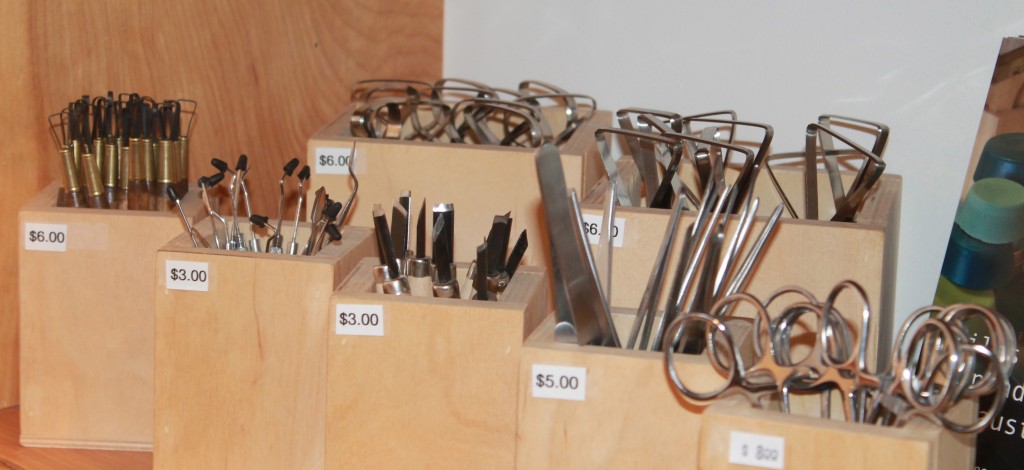
Shop Miles Conrad Encaustics
Photo by Madeleine Boos
Diane Kleiss got hooked on encaustics after taking a class with Miles. Now she is president of the Southern Arizona Chapter of International Encaustic Artists. "With encaustic the tools, the surfaces, it's endless. I'm an experimenter. I would say 99.9% of artists in encaustic are artists in another medium," says Diane. "It does incorporate the punk [thing] of putting any kind of instrument together and the written word and present your vision... I would say art does the same thing with encaustic."
She likes picking up desert objects and using them as inspiration for her sculptures. And her love affair with encaustic makes sense. She used to be a candlemaker. "It never occurred to me that I was coming full circle. I haven't stopped since."
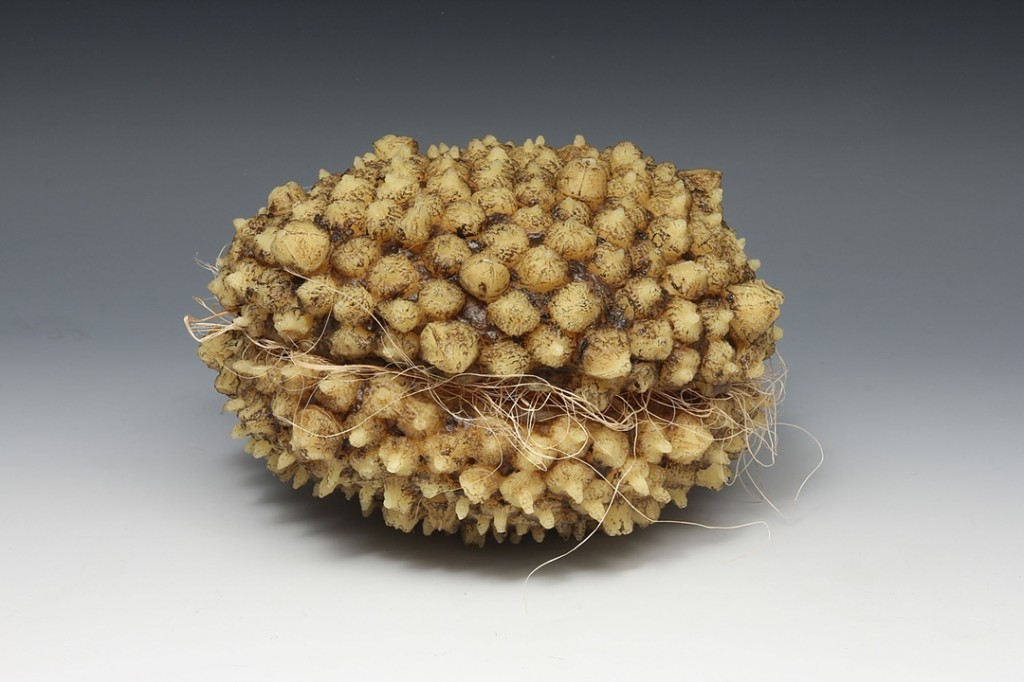
"Earth Pod" 8th Annual Encaustic Invitational
Photo courtesy of Artist Helen Dannelly
Helen Dannelly, who specializes in sculpture, calls encaustic “the most versatile medium I’ve come across – a perfect solution for me to express myself. You can make prints with it, etch, carve, sculpt, cast, dip paper and fabric in it. Working with encaustics, I can do several paintings in a day. With oil paint, you wait for it to dry." Her current work - included in the Conrad Wilde exhibition - is inspired by nature: plant life, sea life, pods, seeds, leaves. It has been her aim to get into Miles' gallery for some time.

Photo courtesy of Miles Conrad
Miles' own encaustic sculptures are abstract, with one significant installation inspired by microbiology. The sculptures resemble intestines, cells, perhaps undersea creatures. Tucson lawyer Peter Goldman and his wife, Beverly Werber, bought the whole collection. It joins their extensive art collection, which includes a couple of more traditional encaustic paintings.
Miles' work is a shocker, say Peter and Beverly. "It challenges your expectations, your ideas about what art is. It's pushing off a little bit, it's no longer comfortable. It's somewhat repellent and somewhat attractive," says Peter. Asked to describe what they see in it, Peter says: "Asteroids in space." Beverly says: "Undersea creatures."
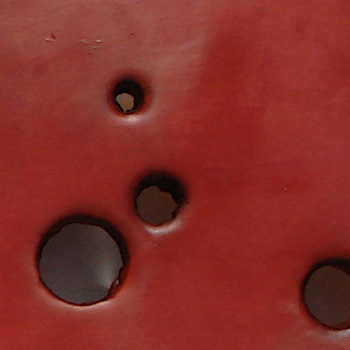
Photo courtesy of Miles Conrad
Beverly says she has watched Miles teach, and it's a wonderful thing. His teaching method is as self-effacing, yet encouraging, as his general demeanor, she says. "He's a real Tucson treasure." And, judging by his prominence in the encaustic world generally, he's a national treasure too. Encaustic is hot, and Tucson - thanks to Miles - is a driver in the movement.
Which brings us to a burning - or, rather, melting - question. What happens to all of those wax pieces in the extreme desert summer heat? It's a problem if you're ferrying encaustic art around in your car, say encaustic artists. But nobody's heard of any melting disasters yet. “Its melting point is 150-180 degrees," says Helen. "If you’re house is that hot, you’ve got bigger problems than melting wax."
* Visit the Eighth Annual Encaustic Invitational at Conrad Wilde Gallery, 439 N. 6th Avenue, Tucson. Tel: 520 622 8997.
*More encaustics at the Invitational. Not to be missed. Show ends April 27th.
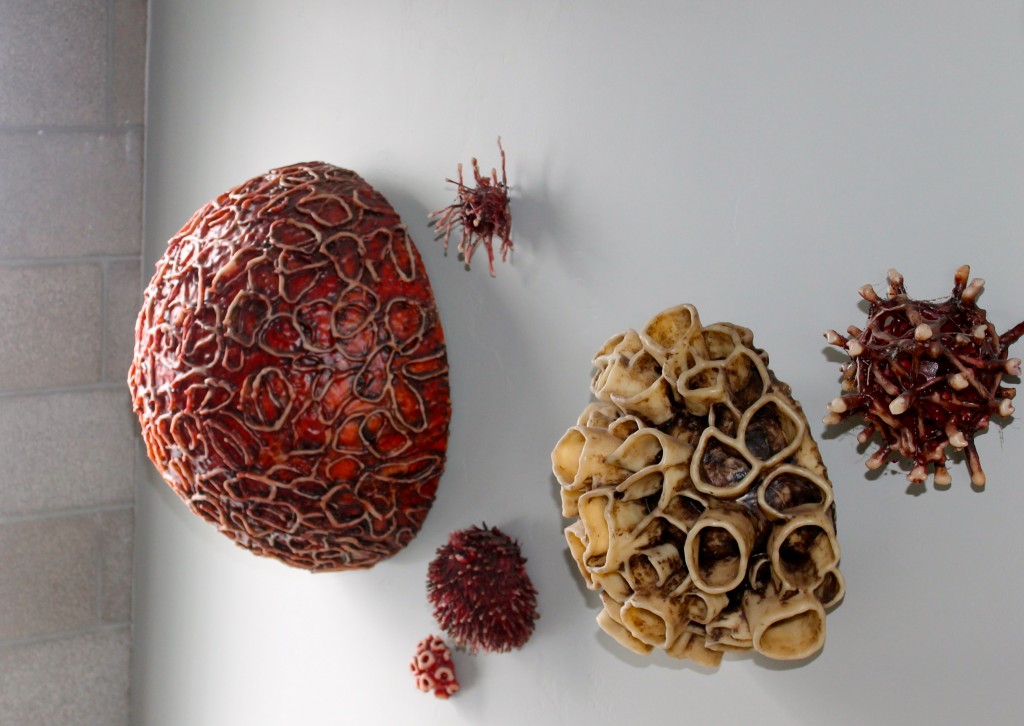
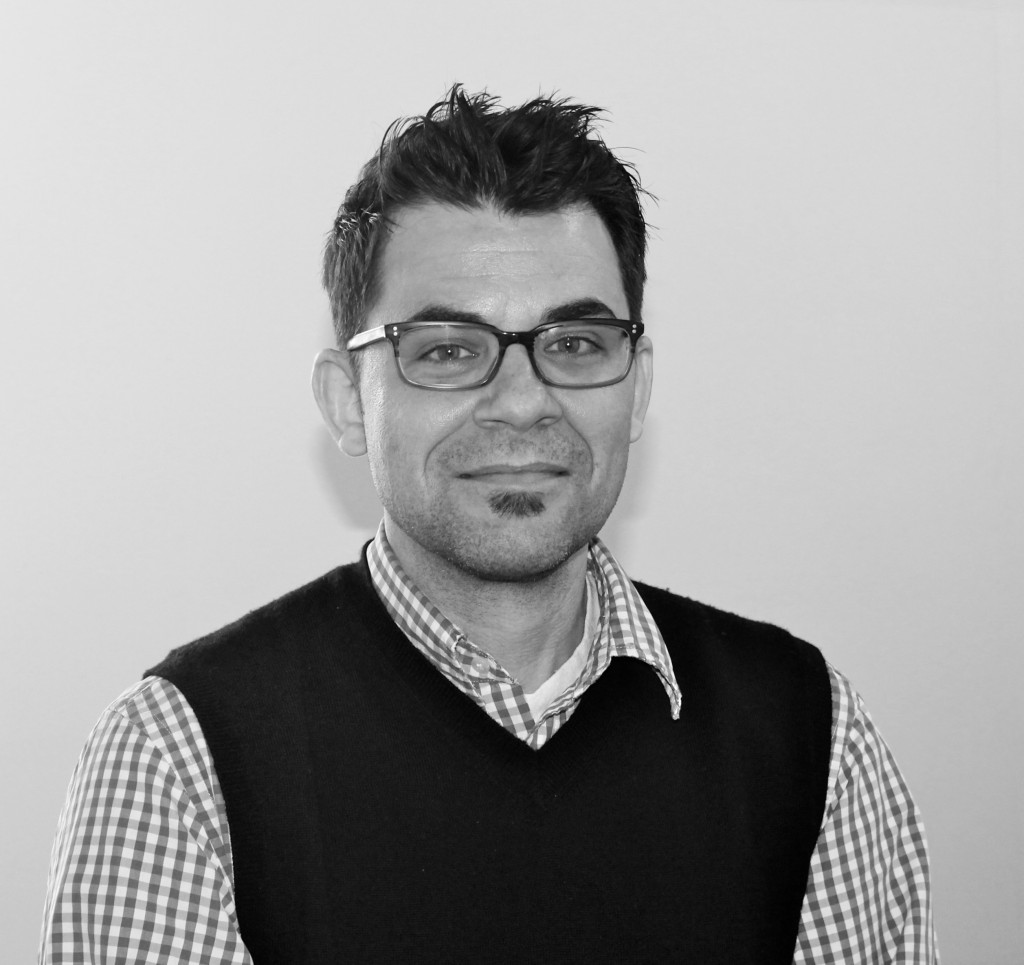



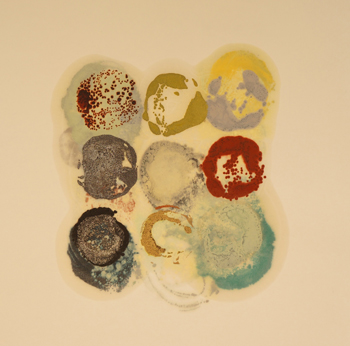








Love this work! So inspirational.
Gorgeous works!